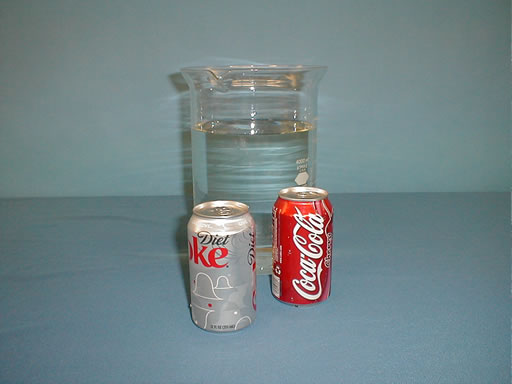Demos: 2B-12 Floating and Sinking Pop Cans

Directions: After identifying the regular and diet drinks, simply place each in the beaker of water.
Suggestions for Presentation: Ask the students what a “light” drink is. Does it have to do with weight? Most are aware that it really means fewer calories, but how might this affect the density? Then take the regular and diet drink and place them in the water. After the regular one sinks, suggest that maybe the diet drink really is “lighter.” Then proceed to the discussion of density (not weight) as being the criterion for sinking or floating. Point out that the liquid contents in the diet can must be less dense than water; in fact, enough less to counteract the weight of the aluminum can itself. If soft drinks are primarily water, how can they have a density less than that of water? More than likely it is the carbonation that does the trick. Then adding sugar or syrup increases the density enough to cause it to sink.
Applications: Many examples of floating and sinking.
Last Updated: Nov 30, 2023 11:25 AM